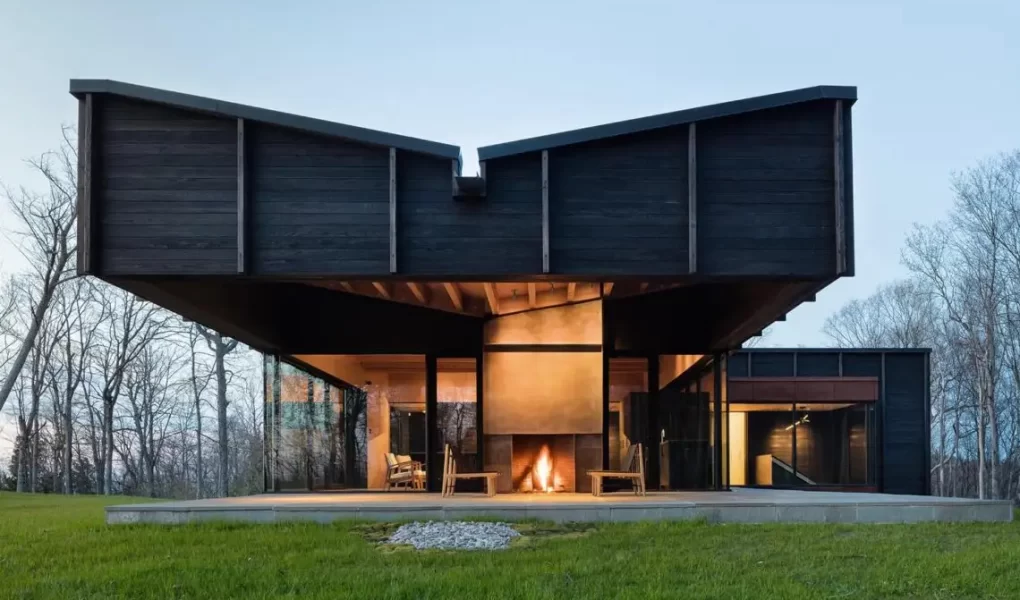Architecture is often seen as a blend of science and art. While it requires technical precision and adherence to safety regulations, it also demands creativity and an innovative spirit. Creative design in architecture involves pushing the boundaries of conventional thinking to produce structures that are not only functional but also aesthetically inspiring and culturally significant. This article explores the essence of creative design in architecture, its importance, key elements, and notable examples that have transformed the built environment.
Table of Contents
ToggleUnderstanding Creative Design in Architecture

Creative design in architecture refers to the process of conceptualizing and realizing architectural projects that transcend traditional design norms. It is characterized by originality, innovation, and the thoughtful integration of form, function, and context. Creative architects strive to design buildings and spaces that are unique, engaging, and capable of evoking emotions and fostering human connections.
The Importance of Creative Design
Creative design plays a pivotal role in architecture for several reasons:
Enhancing Aesthetic Appeal
Creative design enhances the aesthetic appeal of buildings and urban spaces. By incorporating unique forms, textures, and materials, architects can create visually striking structures that captivate and inspire. These designs often become iconic landmarks that define cities and cultures.
Solving Complex Problems
Innovative architectural designs address complex challenges such as limited space, environmental sustainability, and social inclusivity. Creative solutions can optimize the use of resources, improve energy efficiency, and create adaptable spaces that meet diverse needs.
Fostering Human Experience
Architecture profoundly influences how people experience and interact with their environment. Creative design prioritizes the human experience, ensuring that spaces are not only functional but also comfortable, engaging, and conducive to well-being.
Reflecting Cultural Identity
Creative architecture reflects and celebrates cultural identities. By incorporating local traditions, materials, and craftsmanship, architects can create buildings that resonate with the cultural heritage and values of the communities they serve.
Key Elements of Creative Architectural Design
Innovation and Experimentation
At the heart of creative design is innovation. Architects experiment with new materials, construction techniques, and technologies to create groundbreaking structures. This experimentation can lead to the development of new architectural paradigms and the reimagining of conventional spaces.
Contextual Sensitivity
Creative designs are sensitive to their context, considering the geographical, cultural, and social environment. This involves understanding the site’s history, climate, and community needs to create designs that harmonize with their surroundings and enhance the local character.
Functional Integration
Functionality is a cornerstone of creative design. Architects strive to balance form and function, ensuring that the aesthetic appeal of a building does not compromise its usability. This involves meticulous planning and a deep understanding of how people will use and interact with the space.
Sustainability
Sustainable design is a critical aspect of creative architecture. This involves the use of eco-friendly materials, energy-efficient systems, and design strategies that minimize environmental impact. Creative architects seek to create buildings that are not only beautiful but also sustainable and resilient.
Technological Integration
The integration of advanced technologies is a hallmark of creative design. This includes the use of Building Information Modeling (BIM), 3D printing, and smart building systems. These technologies enable architects to visualize complex designs, streamline construction processes, and enhance the functionality of buildings.
Notable Examples of Creative Design in Architecture
The Guggenheim Museum Bilbao, Spain
Designed by Frank Gehry, the Guggenheim Museum Bilbao is a masterpiece of contemporary architecture. Its innovative use of titanium panels, organic forms, and dramatic curves has made it an iconic symbol of modern design. The museum has not only transformed the city’s skyline but also revitalized the local economy and cultural scene.
The Sydney Opera House, Australia
Jørn Utzon’s design for the Sydney Opera House is a quintessential example of creative architecture. Its sail-like shells and innovative structural engineering have made it one of the most recognizable buildings in the world. The Opera House seamlessly integrates with its waterfront setting, creating a harmonious blend of architecture and nature.
The High Line, New York City, USA
The High Line is an exemplary model of adaptive reuse and urban design. This elevated linear park, designed by James Corner Field Operations and Diller Scofidio + Renfro, repurposes an old railway track into a vibrant public space. Its creative design incorporates native plants, public art, and community spaces, transforming a derelict structure into a cherished urban oasis.
Bosco Verticale, Milan, Italy
Bosco Verticale, designed by Stefano Boeri, is a pioneering example of vertical forestation in urban architecture. These residential towers feature extensive greenery, with thousands of trees and plants integrated into the building’s façade. This creative approach enhances urban biodiversity, improves air quality, and provides residents with a unique living environment.
The Future of Creative Design in Architecture
The future of creative design in architecture is promising, driven by advancements in technology, a growing emphasis on sustainability, and an increasing appreciation for cultural and contextual sensitivity. Architects are exploring new frontiers in parametric design, biomimicry, and smart buildings, pushing the boundaries of what is possible.
Parametric Design
Parametric design leverages algorithms and computational techniques to create complex, adaptive forms. This approach allows architects to generate innovative designs that respond to specific environmental and functional criteria, resulting in highly efficient and aesthetically unique structures.
Biomimicry
Biomimicry involves drawing inspiration from nature to solve architectural challenges. By mimicking natural forms, processes, and ecosystems, architects can create sustainable and efficient designs. This approach fosters innovation and provides solutions that are inherently integrated with the environment.
Smart Buildings
The integration of smart technologies in building design is revolutionizing the way we live and work. Smart buildings utilize sensors, automation, and data analytics to optimize energy use, enhance comfort, and improve safety. These innovations enable architects to design more responsive and adaptive spaces.




